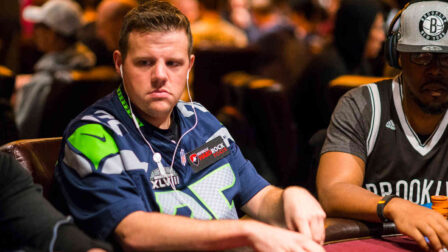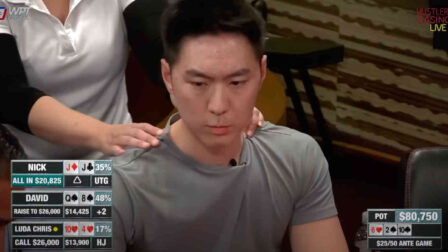Suited Connectors: Top Tips For Winning More Often

8 minutes
Last Updated: March 19, 2024
Suited connectors are probably among the most complicated hands to play correctly in Texas Hold'em. Unlike small pairs, which you usually play for their set value, or big hands that are played for their face value, suited connectors are somewhere in between, and this leads to many complicated postflop spots.
Suite connectors are great for their potential to make straights and flushes, which, in general, are very strong hands.
On the other hand, you'll often find yourself in spots where you have a medium-strength hand and not knowing what to do when faced with aggression.
In this article, we'll break down some of the strategies behind playing suited connectors and their profitability. Through strategy discussion and some concrete online poker examples, this piece should help you understand when you should or shouldn't get involved with suited connectors from the perspective of position, stack depth, implied odds, etc.
How Valuable Are Suited Connectors?
Perhaps the most important thing players should realize about suited connectors strategy, especially those new to poker, is that these hands look much better than they actually perform. It is easy enough to look at a hand like 5h6h or 8s9s and imagine all the different scenarios where you’ll flop a huge hand and stack your opponent.
The problem is the number of actually favorable flops is rather small when thinking about all possible flop combinations that exist. You will much more often see a flop where you have 2nd or 3rd pair or a weak draw like a gutshot than a made hand, and those are not easy to play.
So, since you don’t actually get to choose community cards, it is important to stay realistic about your chances of hitting a big flop and stacking your opponent.
Furthermore, you need to also keep in mind that it might be hard to get all the chips from a competent player on your perfect board. Unlike small pocket pairs, which can be really concealed when you hit a set, big hands with suited connectors often involve highly coordinated boards that are easier to run away from.
All of this isn’t to say that suited connectors don’t have their place in your overall game plan, but you need to keep these few things in mind at all times. You can also take a look at the full upswing poker lab review, which also digs deeper into this area. That way, it will be easier to understand and adhere to the rest of the advice contained in this article.
Suited Connectors Strategy for Different Stack Sizes
Just like small pocket pairs, suited connectors are hands that tend to realize most of their equity after the flop, through value bets or semi-bluffs that get there or get your opponent to fold the best hand. For these scenarios to be possible, however, you need to have effective stacks that are deep enough to warrant your involvement.
In general, suited connectors don’t play particularly well against short stacks. Fewer the blinds they have, lesser the incentive there is for you to get involved.
If someone opens from a cutoff and you’re sitting with a hand like 6s7s, there is almost no doubt they have a mathematically better hand. You’re looking to out-flop them and/or out-play them, which becomes increasingly difficult as effective stacks become shorter because you have way less room to maneuver or fire a few streets as a semi-bluff.
Therefore, choosing the right hands to play preflop should be your priority, and these Texas Holdem cheat sheets can help you out.

To 3-bet or not to 3-bet?
Given the fact suited connectors look nice on the surface and do have the potential of making really big hands, it is often tempting to go for a 3-bet and either win a pot right then and there or build a pot to win on the flop or on the later streets.
When making a decision on whether to 3-bet or not, you need to be very careful about the effective stack size.
If the initial raises are playing with a stack of 50-60 big blinds, you should almost always opt for a call instead of a 3-bet. This makes perfect sense if you look at the main reasons for 3-betting in the first place, which are:
- To try and fold out better hands
- Build the big pot for when you do hit big (straights, flushes)
- Bluff your way to a win by firing on multiple streets
When you’re up against a short stack, most of these reasons go out of the window. By 3-betting, you’re building a big pot, which means that the stack to pot ratio (SPR) becomes smaller. This significantly decreases your bluffing opportunities as well as implied odds when you do hit the dream scenario because your opponent simply doesn’t have enough chips in their stack.
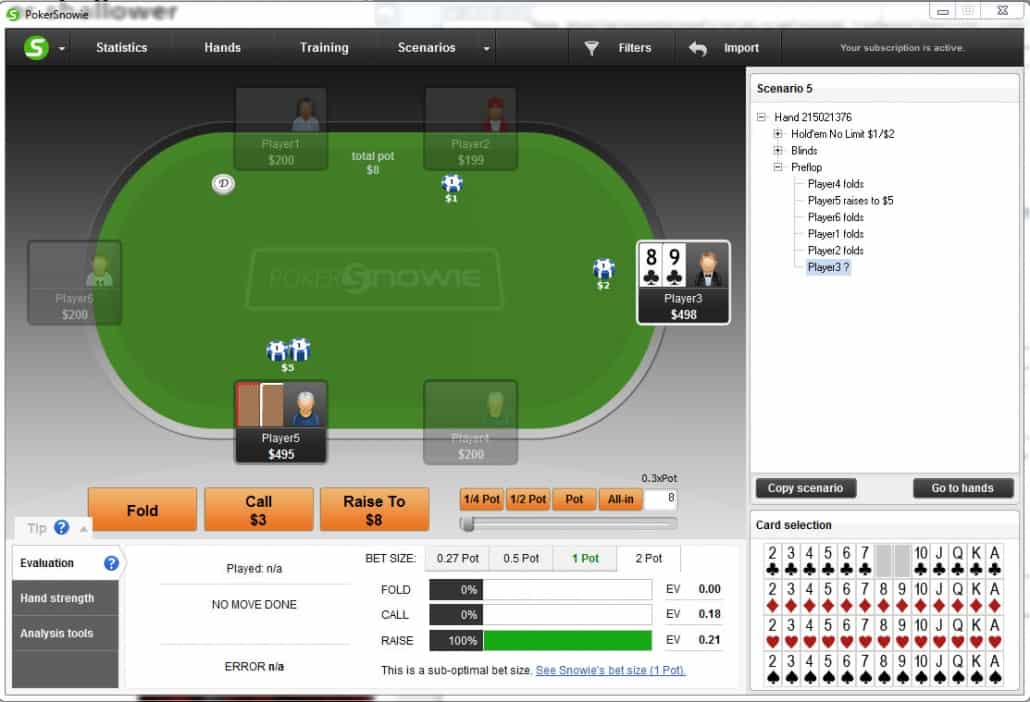
Get PokerSnowie FREE Trial and try it yourself!
In the situation where both players are very deep, sitting on a stack of 250 big blinds, PokerSnowie suggests making a big 3-bet is a slightly more +EV play. However, you should also be aware that while the EV alone may be slightly higher, realizing this EV out of position can be very tricky with a hand like 8c9c.
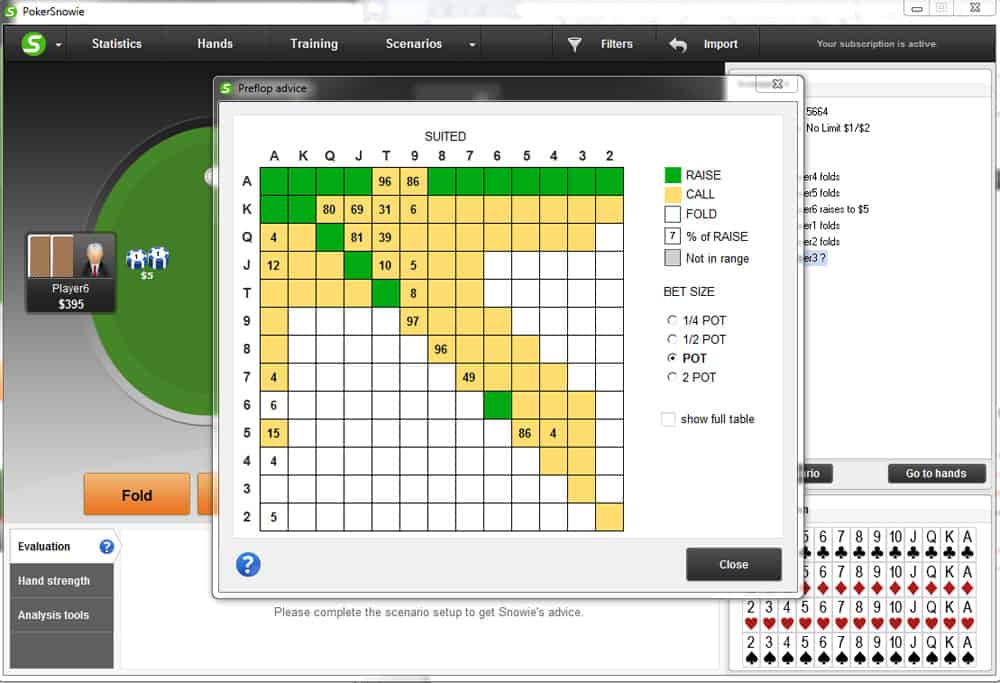
When facing a cutoff open with 200 big blinds effective, we see that PokerSnowie software suggests adding some 3-bets with suited connectors into the mix, albeit at low frequency. As we move on to the button, the 3-betting range with suited connectors changes somewhat.
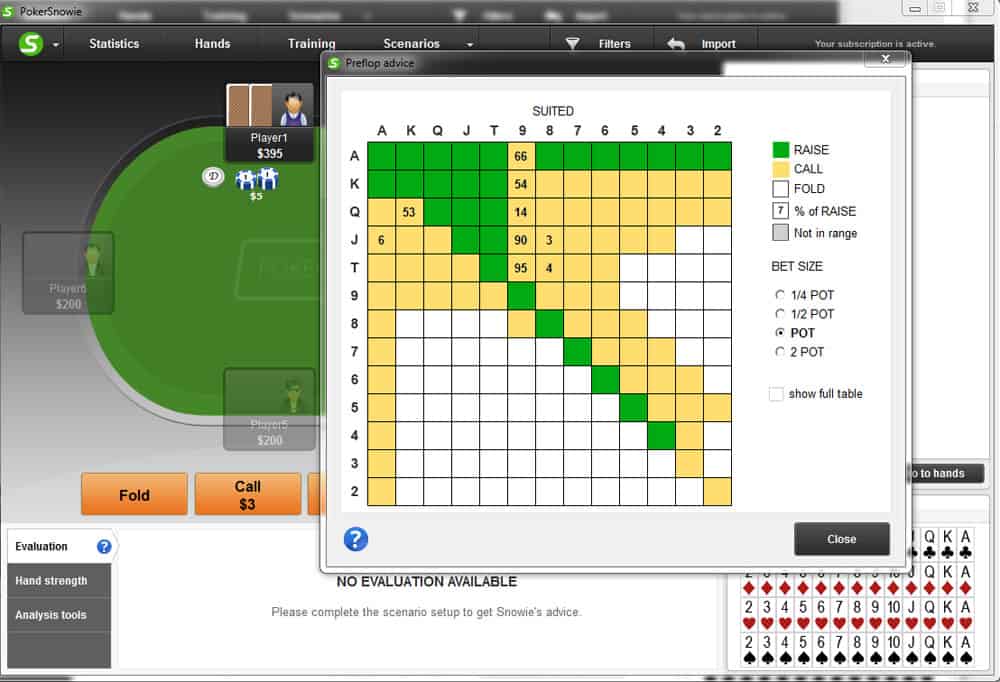
So, overall, suited connectors can be fine hands to 3-bet with as long as you’re doing it sparingly and avoid doing against short stacks. Building a pot against another big stack and looking to out-flop or out-maneuver them as you go along is a perfectly fine strategy but not something you’ll want to do every other hand.
Overcalling with Suited Connectors – Tips
For all the reasons already discussed in this article, it can be so tempting to try and overcall with a suited-connector type hand and try to see the flop. After all, these hands can be so powerful, and you don’t mind taking them up against multiple opponents. However, there are a couple of problems with this line of thinking.
- If you overcall, it is possible another player will attempt to squeeze and steal the pot
- If you do go to the flop, poker hands ranges aren’t very well defined and then can cause some problems
The first idea is easy to understand. In a pot with so much dead money, it is safe to assume that players still to act will attempt to squeeze at least some percentage of the time (whether they’re just trying to steal or have an actual hand). When this happens, we’ll usually be forced to fold and give up on our future equity (and any chips we’d already committed to the pot).
Of course, if you play online poker and have decent information about players in the hand, you can make a better judgment about how (un)likely a 3-bet is. And you better make sure to have poker tools that will help you with that.

The other issue is a bit more complex and hard to really figure out. If one player opens a hand and then there are three callers (including you), it is really hard to figure out where you are in the hand. You might end up in a scenario where your trips or your flush are actually the second-best hands because someone else also overcalled with a fairly weak hand that still dominates your 6-7 suited.
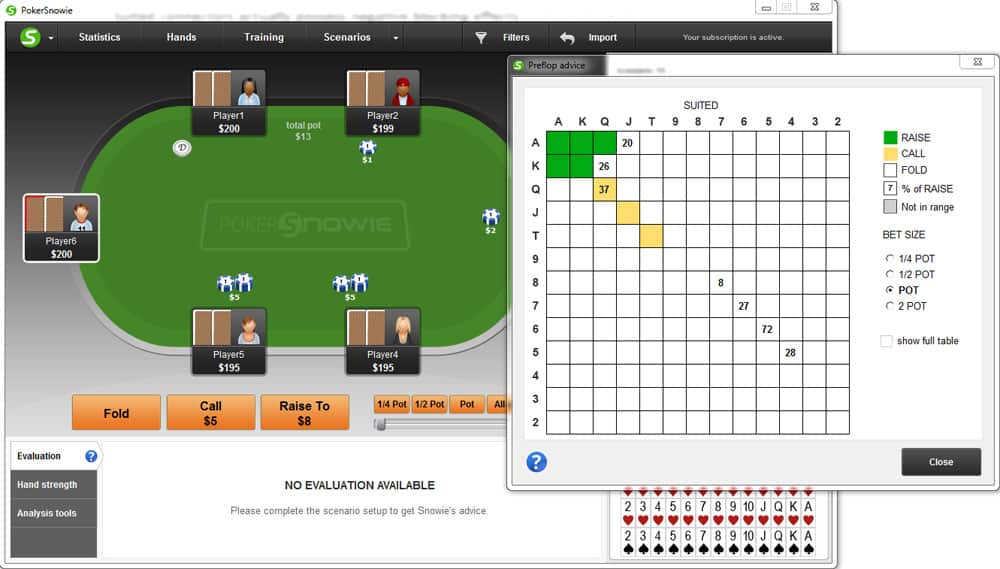
Get PokerSnowie FREE Trial and try it yourself!
We can see that PokerSnowie doesn’t actually suggest any suited connectors in the calling range with a raise and call in front of us when we’re in the cutoff. Instead, the software prefers throwing in a few light squeezes to take control of the pot and try to better establish the situation in the hand.
Of course, if you’re in the big blind and last to act, you’re getting insane odds and are also guaranteed to see the flop, so this changes situation quite dramatically. In this scenario, you’ll want to at least see the flop almost 100% of the time with all types of suited connectors.
In fact, Snowie advocates for a fairly wide 3-betting (squeeze) range that involves quite a few suited connectors.
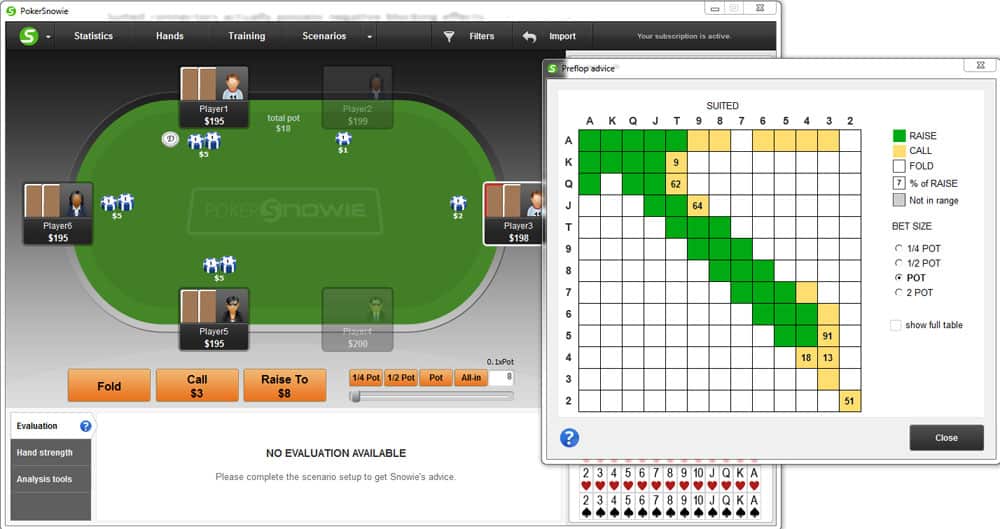
So, although it may seem more natural to just call and see the flop with some of these hands, taking a more aggressive approach is actually a better option in these situations. By doing this, you’ll put a lot of pressure on your opponents, and in the situations where you do hit big with your suited connectors, it will be hard for them to put you on the correct range. But you should always make your final decision based on the players you are up against.
Conclusion: A Powerful Weapon When Used Right
The takeaway from this article is that suited connectors certainly have an important role in your overall poker game, but you need to use them correctly.
Keep in mind these hands are best played against deeper-stacked opponents, as the bulk of their value comes from implied odds and successful (semi) bluffs.
As long as you mix them in with your other hands and don’t overvalue them, suited connectors can be very profitable. Hopefully, some of the advice contained here will help you shape your strategy and avoid some of the pitfalls that are inherent in playing suited connectors.
Summary:
- Suited connectors gain value when effective stack size increases
- These hands are very weak when you are short-stacked
- It works as a great 3bet bluff hands because of added playability post-flop
- Contrary to popular belief, you should not be overcalling much with suited connectors



















